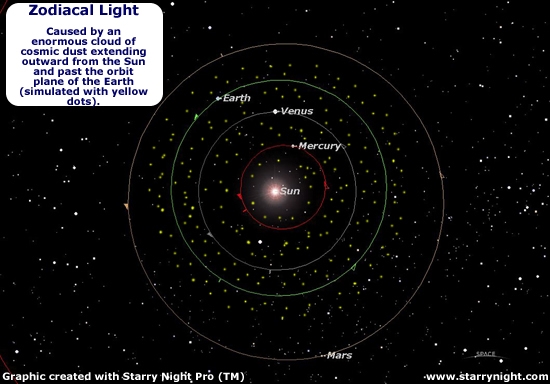Starry Night This Week
Each week most PBS stations air "Jack
Horkheimer: Star Gazer", the world's first and only weekly TV series
on naked-eye astronomy. The Starry Night images on this page illustrate
the show for the week of Monday September 9, 2002. You can
view the complete show script, or watch
a RealPlayer video of the show.
The Annual Return Of The False Dawn Of Omar Khayyam And How To Find It Next Week

The dust released into our solar system by comets and asteroids disperses into the ecliptic plain in which the planets move around the sun. These dust particles form a flattened disc in the ecliptic plain in the inner part of the solar system. The orientation of the ecliptic in September and October makes it a favorable time for trying to view the Zodiacal Light from the Earth. Look for the Zodiacal Light in the East before the beginning of astronomical twilight, about 1 1/2 hours before sunrise. If the skies are clear and you are far away from city lights you might see a triangular glow of light going up to 35 to 40 degrees from the horizon. It can be 15 degrees wide near the horizon and narrow to 5 degrees at the top. Under perfect conditions, the Zodiacal glow can be as bright as the Milky Way. Historically, the Zodiacal Light has been known as the "false dawn".